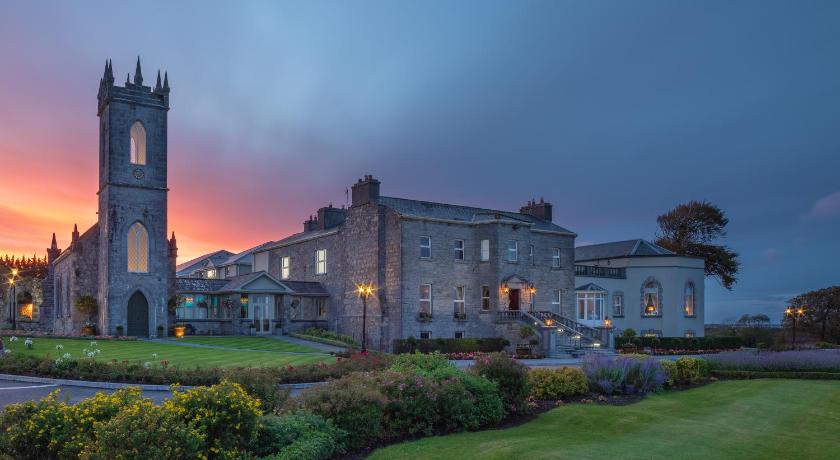There are places in Ireland where history folds around you like a familiar quilt, and Glenlo Abbey is one of them.A grand estate on the edge of Lough Corrib where the past walks beside you as softly as a nun in cloistered halls. Long before it was a sanctuary for the travel-worn and the dream-hungry, Glenlo began as a country house in the 18th century, a place of elegance and sweeping views, where the land itself seemed to inhale and exhale refinement.
In the centuries that followed, the estate passed through many hands—families who built, expanded, and tended it with the sort of pride that outlives them. The Ffrench family added the abbey in 1740, giving the place its soul: stone walls that still hold the hush of prayer, vaulted ceilings echoing with a serenity only time can teach. Later generations christened the walled gardens, planted rows of beech and oak, and carved carriage roads that curve like quiet invitations through the estate.
And then came the years when Glenlo changed again—its abbey restored, its rooms polished, and its spirit renewed into the grand hotel it is today. The Pullman carriages from the Orient Express arrived, polished brass and paneled mahogany gleaming like a memory of another age. They became part of Glenlo’s story too, proof that beauty never truly disappears; it simply finds new ways to express itself.
There’s a moment in every story, fictional or otherwise, when a character stands between the life they’ve lived and the one that’s calling them forward. For Maeve O’Sullivan in Threads of Passage, that moment happens at Glenlo Abbey.
When I wrote the Glenlo sequence, I wasn’t simply searching for a beautiful backdrop. I chose it intentionally, both for its real history and for what it symbolizes in Maeve’s emotional journey.
I wanted Maeve to experience that feeling. To stand somewhere steeped in history and refinement, somewhere she and Robert always planned to visit, before she steps into the next, quieter chapter of her life. Writing those pages allowed me to honor her gratitude for the abundance she once shared with him: the travel, the fine details, the luxuries they both worked so hard to enjoy.
But Glenlo also creates contrast.
Against its chandeliers and hushed corridors, Maeve begins to feel the unmistakable pull of her roots—her South Boston upbringing, where people cooked with whatever they had, worked with their hands, and lived by the unspoken truths of community, loyalty, and grit. Glenlo becomes her threshold: the place where she can lovingly close the door on the life she had with Robert and step toward the one her spirit has been quietly yearning for.
A small cottage. A community knit together by friendship. A return to creativity, to simplicity, to the unadorned beauty of an Irish village by the sea.
Glenlo Abbey gave me the perfect setting to show that shift. Not as a rejection of luxury, but as a nod of gratitude toward it. A final “thank you” before Maeve begins again.
If you’ve ever felt the tug between the life you built and the life waiting inside you—between comfort and calling—you’ll understand why I chose Glenlo Abbey for that turning point.
✨ Ready to Walk With Maeve on Her Journey?
Discover why so many readers say Threads of Passage transported them straight into an Irish village filled with hope, heritage, and second chances.
👉 Read Threads of Passage and let Ireland meet you where you are. Available on Amazon

